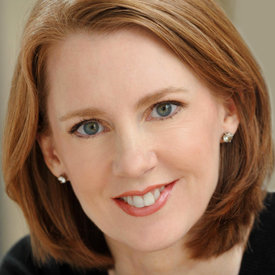I love the subject of clearing clutter.
For me — and for most people — outer order contributes to inner calm. I feel this phenomenon in my own life; it exhilarates me in practice and fascinates me in theory.
So I was eager to read Marie Kondo’s blockbuster bestseller, The Life-Changing Magic of Tidying Up. And I found it thought-provoking, and I got some great clutter-clearing tips from the “KonMari method.”
I also have some profound disagreements with Marie Kondo.
As I write in The Happiness Project, and Happier at Home, and Better Than Before, I’ve come to believe deeply that we all must find the way to happiness and good habits that’s right for us.
There is no magic, one-size-fits-all solution. Just because something works for you — or Marie Kondo — doesn’t mean that it will work for me. We can all learn from each other, absolutely, but there’s no one way to achieve anything. You indulge in moderation; I abstain. You exercise in the afternoon; I exercise first thing in the morning. You like lots of abundance; I like simplicity. No one’s right, and no one’s wrong. It’s what’s true for the individual. (You can read more about this in Better Than Before, in the chapter about “Distinctions.”)
Trending: Best Happiness Books of 2025 (So Far)
And Marie Kondo does argue for the one best way. And here’s the thing: you read five pages of this book, and you know that Marie Kondo is an extreme, idiosyncratic personality. Which I love! Which makes the book much more interesting! But what works for Marie Kondo isn’t necessarily a great guide for what works for another person.
From her own description of herself, she makes it clear that she’s a simplicity-lover, who likes to take big steps, who’s a sprinter, and a person who who doesn’t feel strong emotional attachment to possessions. (Though at the same time, she shows a strong feeling of animism, which I found intriguing.) But some people are abundance lovers, and some people like to start small, and some people are marathoners, and some people have strong emotional attachments to possessions. So her guidance may not work for you.
Here are the 7 main concepts where I disagree with Marie Kondo:
1. She advises putting every item in a category on the floor as the first step in clearing clutter.
She advises that that if you’re cleaning your coats, take out every single coat, if you’re clearing your bookshelves, take out every book. In my experience, this can easily become overwhelming and lead to more clutter that lasts a long time, because people bite off more than they can chew. Know yourself.
2. She advises having a joyful relationship with every item you own.
She recommends asking yourself whether an item “sparks joy.” This is a terrific question, and can be very helpful. But I don’t think I can realistically expect to have a joyful relationship with every item in my apartment. I find it exhausting even to contemplate having an emotional reaction to so many common objects. It’s true, though, that for many people, “spark joy” has been a revelation. Know yourself.
3. She advises clearing clutter alone and in quiet.
For me, that’s very true. For many people, it’s helpful to have a clutter-clearing partner. Another person can help with the grunt work, give advice about what to keep or discard, and can make a chore more fun. Know yourself.
4. She suggests taking everything out of your handbag, every day.
This would not be a good use of my time or energy, and I don’t think it would achieve anything. On the other hand, when Elizabeth and I talked about “the challenge of switching bags” in episode 55 of our podcast Happier, many listeners let me know that they followed Marie Kondo’s suggestion, with great success. Know yourself.
5. She suggests going big and doing a giant purge rather than tackling a little clutter each day.
But, as I write about in Better Than Before, some people like to start big, and some like to start small. It’s exhilarating, and highly productive, to tackle a big, one-time goal, and a clean slate is powerful — it’s also true that we can get a lot done, by doing a little bit each day over a long term. Know yourself.
Trending: Why Rest is the Biggest Productivity Hack for Your Brain
6. She says that the best time to start is early morning.
That’s true if you’re a morning person, but I doubt that’s true if you’re a night person. Know yourself.
7. She suggests that folding is the best way to store most clothes.
She’s a big proponent of folding — and a very particular method of folding. I myself just can’t handle that high level of commitment to folding.
Know yourself. Use what works for you.
The problem arises when you beat yourself up for not being able to do things the KonMari way, “the right way.” When it comes to clearing clutter, there is no right way, only what’s right for you. Don’t get me wrong. I love Marie Kondo’s book. I found it thought-provoking, helpful, and engaging. The minute I finished the book, for example, I got rid of a million coats.
Here’s the thing. As I was writing Better Than Before, it seemed so obvious to me that there’s no one “right” way or “best” way to change habits. So why, then, do so many experts assert that they’d found the one true way?
There’s something about human nature…when it comes to getting advice, we love to be given the true plan, the precise template that’s going to reveal exact directions to success.
And when it comes to giving advice, it’s easy to assume that because some strategy works well for us, other people will use it with equal success.
Trending: How to Break Free From the Ambition Trap
But it’s always a matter of the individual.
I learned a lot of little things from Marie Kondo, but there was one big thing I learned: that we should stay grateful for our possessions — for having served us well, for embodying someone else’s affection for us in the form of a gift, or for giving us a thrill upon purchase. An “attitude of gratitude,” for even inanimate objects, makes us happier. I know that I’ve never let go of an old laptop without taking a moment to think, “Farewell, my old friend, we’ve had some great times together, but now it’s time for you to rest.”
The relationship between possessions and happiness! One of the most fascinating themes I’ve ever studied.
A version of this article originally appeared on Gretchen Rubin’s website.






























